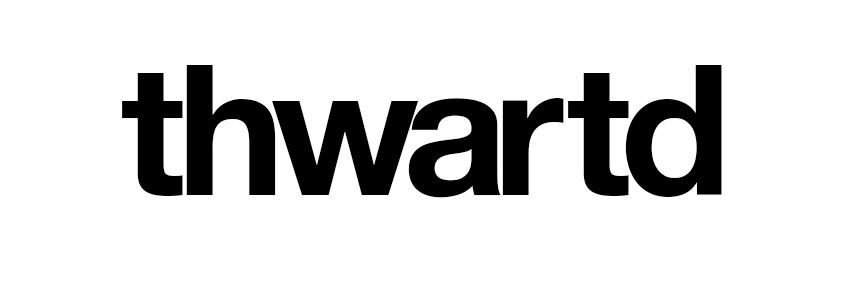There’s a major shift happening in ad agency creative departments. Projects that were typically assigned to a team of two creatives are being assigned to a group of people—perhaps five, ten or even twenty people—that sit in a room and create ideas together as one unit.
This is considered to be a more collaborative approach to creating big ideas. In my view, this approach is born from good intentions, but it presents serious problems. As mentioned in an earlier post, collaboration is valuable, but not as a replacement for the traditional teaming of one art director and one writer to generate ideas.
The reason becomes very apparent when raw ideas begin to take form. In a group, minor differences of opinion become giant disagreements. Everyone seems to have a different view of how to craft an idea. And when there are more than two people, it can get really ugly. At which point, the only way forward is to split up or compromise.
Our individual creative vision—that magical property that makes each of us so unique and interesting—gets lost when we’re forced to collaborate in larger groups. It’s when too many cooks spoil the pot.
But there’s an additional downside: lack of ownership.
If you own a project then you are responsible for the outcome, which means your personal reputation is on the line. This creates an unparalleled sense of commitment and zeal, which are two things absolutely necessary to withstand the forces of mediocrity and carry your idea to the end zone. It also inspires a higher level of craftsmanship.
In the traditional arrangement of two creatives—one art director and one writer—there’s a kind of beauty. They brainstorm ideas together, but ultimately each person is responsible for their role. Even though they butt heads once in a while, they work it out. Typically, whichever person is less determined about a certain point of difference eventually concedes to the other. Sometimes it’s the art director and sometimes it’s the writer. In a good relationship, they give and take. Most of the time the outcome is good.
Contrarily, in the group scenario, it’s often unclear who will execute what. Or how. Usually what happens is this: the A-type people get bossy, arguments ensue, people take sides and stalemates occur. Eventually, they break up into smaller groups or pair off, then compete with each other instead of working together. I wish it weren’t so, but it’s just human nature.
Additionally, when you put people with different disciplines into the same room and ask them to create ideas together, they don’t easily mesh. Everyone begins to think and communicate in a way that reflects their individual skill sets. Almost as if everyone is speaking a different language.
Even worse, people quickly gravitate to their computers and start comping who knows what. The graphic designers start finding pretty pictures and setting type. The web designers start scrolling through FWA for inspiration and building parallax test pages. Art directors start scribbling ad concepts. Writers start typing headlines and writing manifestos. Others do their thing, whatever it is. But nobody works toward a central idea because they never came to agreement.
The truth is, locking a bunch of people in a room together and expecting great ideas to happen, is just plain naive.
A better way is to assign a team—an art director and a writer—to each project. Their sense of ownership and empowerment will compel them to create better ideas. If they underperform and disappoint, then fire them. This will help maintain a really high standard in your creative department, where every team is an all-star team.
-------
If you absolutely must have a large group of people participate in an important brand effort or a new business pitch, read on.
- Ask everyone in your creative department to dream up platform ideas only. A platform is basically a tagline or campaign theme line, followed by a short paragraph rationale. Each platform fits on a single sheet of paper. Text only, no pictures.
- Get the best platform(s) approved all the way to the top decision maker, such as the CMO and/or CEO.
- Brief the creative department on the chosen platform(s) and organize an initial brainstorming session with everyone together (collaboration at its best). This session will inspire a lot of deep thinking. Encourage everyone to participate and say anything. No idea is bad at this point. Write them on large pads of paper and pin them to a wall. (It’s been discovered that playing a round of Pictionary first will get people in the right frame of mind, so they feel comfortable blurting out anything without embarrassment.)
- Break into small groups (preferably pairs of two people; three at most) and concept ideas using the brainstorming session wall for inspiration. Provide as much time as necessary.
- Arrange another group meeting with everyone in attendance and ask each team to present their ideas to the ECD in the room. (Do not create approval layers prior to the ECD reviewing the work. It filters out potential diamonds.)
- Choose the best ideas and then assign CD’s to manage and refine them (or just keep it flat and allow everyone to present directly to the ECD).
I’ve experienced many different creative development processes and this is best way to utilize a lot of people on one creative project or pitch. It avoids ego clashes, personality clashes, unnecessary layers, compromises and frustration. Everyone gets their say. Everyone gets their spotlight. Everyone is happy. And, of course, the ideas are better.
That said, my favorite approach to creative development is to assign one team of highly talented creatives to every project and let them own it. There’s a reason why it has worked well for 40-plus years.
-------












